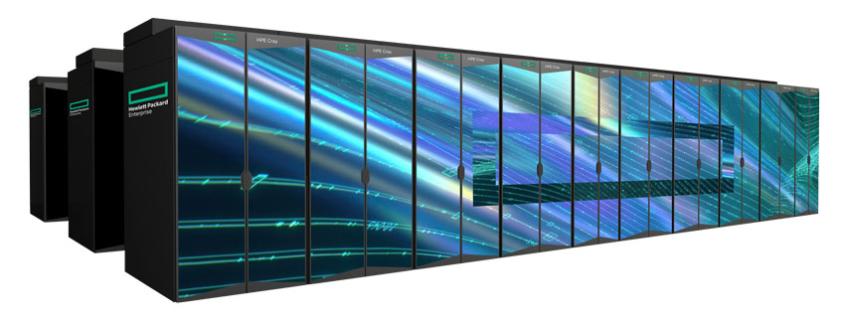In July, selected projects will start pilot testing LUMI, one of the world's largest computers.
The selection of pilot projects starts now, and in Norway, Sigma2 is responsible for the selection.

Two Norwegian pilots
In the first test phase, the CPU and storage systems are checked. In the second phase, expected to start in December, the GPU part will run at full load. Each test phase lasts for 20 days. LUMI then opens for operation in two stages. CPU and storage in early August 2021 and GPU in January 2022.
Each member nation in the LUMI consortium contributes to selecting the pilots. In Norway, UNINETT Sigma2 is responsible for the nominations. The other nations in the consortium are Sweden, Denmark, Iceland, Finland, Belgium, the Czech Republic, Poland, Switzerland, and Estonia.
For both test phases, Sigma2 has nominated projects that use and develop the applications Bifrost / Dispatch and NorESM. These applications consume a lot of CPU hours and have seen a significant increase in the need for computing power over time.
Simulating Climate Change
NorESM, short for ‘Norwegian Earth System Model’, is an application that simulates climate change through several interconnected climate system components. The application has been under development since 2007 and is maintained through the project ‘Infrastructure for Norwegian Earth System Modeling’ (INES). The application is recognized by the Intergovernmental Panel on Climate Change (IPCC). IPCC has used research based on NorESM simulations in its climate report.

NorESM has run up to 25,000 cores on Betzy and GPU porting of the code is underway. This makes the application suitable for pilot testing at LUMI.
- Even though significant computing capacity is currently used for climate simulations in Norway and other countries, we still need much more capacity to better understand and describe climate change, explains Jenny Amundsen, special adviser HPC at Sigma2.
The research community agrees that climate and climate calculations are of great social importance in the future. Therefore, it is important to ensure that the research environments around CESM and NorESM, as well as other calculation-oriented research in Norway, have access to substantial resources.
Learning more about the sun
Bifrost and Dispatch are the names of the applications utilized by the HPC project "Solar Atmospheric Modelling", led by Professor Mats Carlsson at Rosseland Centre for Solar Physics, UiO. In this project, the researchers work with simulations of the sun's atmosphere (the outer layers from which sunlight comes) and compare these with observations from solar telescopes on the ground and from space to learn more about how the sun, and thus other stars, works.

This self-developed application has contributed to making the research group world-leading in modelling the solar atmosphere. The application is highly parallel, which means that it uses numerous processor cores to perform calculations faster. On Sigma2's new machine, Betzy, the application has been tested more than 131,000 cores, and application developers are collaborating to adapt the code to the GPU. This makes the applications particularly suitable for piloting LUMI.
- In the long run, we hope the increased knowledge can provide a better understanding of solar storms and better forecasts of space weather, says Mats Carlsson. To achieve this, we must simulate much larger areas of the sun than we have done so far, and this requires much larger computing resources as well as the development of new algorithms and methods. This is what we hope the LUMI machine will help us with, says Carlsson.
For Norwegian researchers and businesses, it is important to have access to world-class high-capacity computation clusters. This technology can help solve major societal challenges, for example in climate, energy, and health research.
- Access increases the ability to deliver internationally competitive research and is important for Norway as a future technology nation. In the longer term, this contributes to securing Norwegian innovation capacity, industry, and employment, concludes Amundsen at Sigma2.
One of three pre-exascale supercomputers in Europe
LUMI is the first of three so-called precursory-exascale supercomputers built to ensure that Europe is among the world leaders in computational power. LUMI is financed by EU and the consortium nations.
Located in Kajaani, Finland LUMI has a theoretical maximum output of over 550 petaflops and is a precursor to exascale machines, that is, a machine that can perform a minimum of one billion billion calculations per second. This means ten times more computing power than the most powerful supercomputer in Europe today.
The other two pre-exascale supercomputers will be installed in Italy and Spain during the year.

Copyright Hewlett Packard Enterprise.